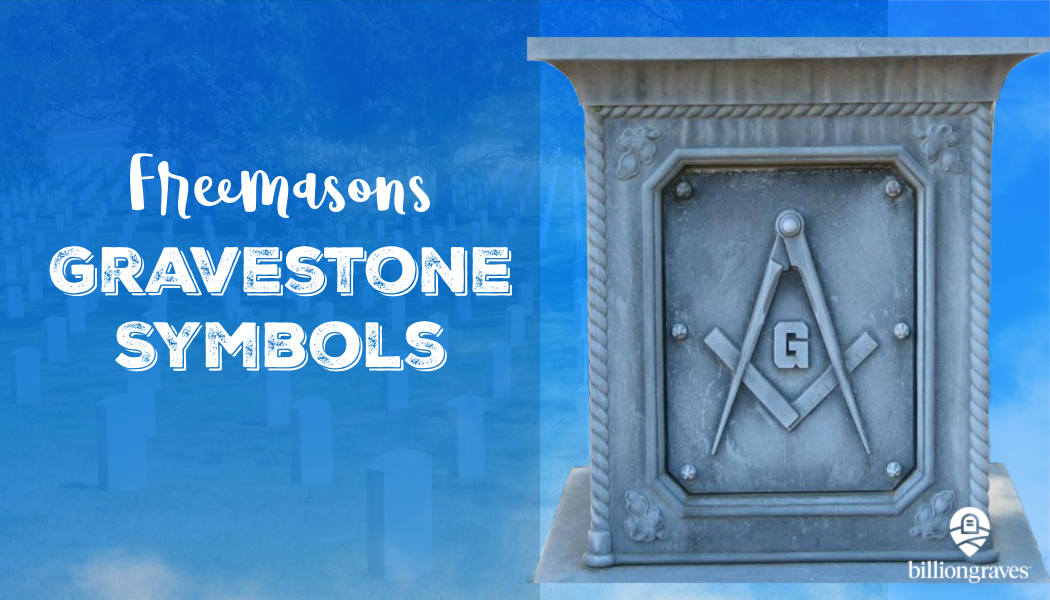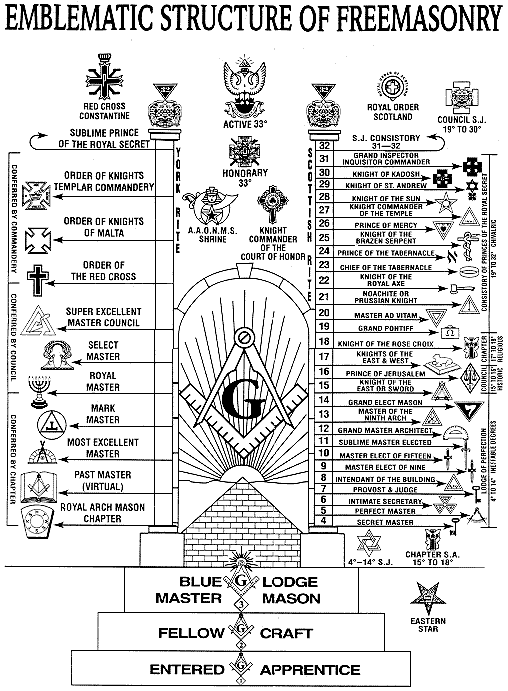Freemasons are the largest and most widely recognized fraternity with over 6 million members worldwide. Members are commonly referred to as Masons and leaders become Master Masons.

We often think of “a mason” as a worker who uses bricks, concrete blocks, or natural stones to build structures. While that is true, the occupation of masonry also laid the foundation for the Freemason fraternity. A little walk back through history will help explain . . .
Solomon’s Temple and the Freemasons
Many of the beliefs and symbols of the Freemason fraternity are said to have been preserved from ancient times by the masons who worked on Solomon’s temple in approximately 950 B.C.E.
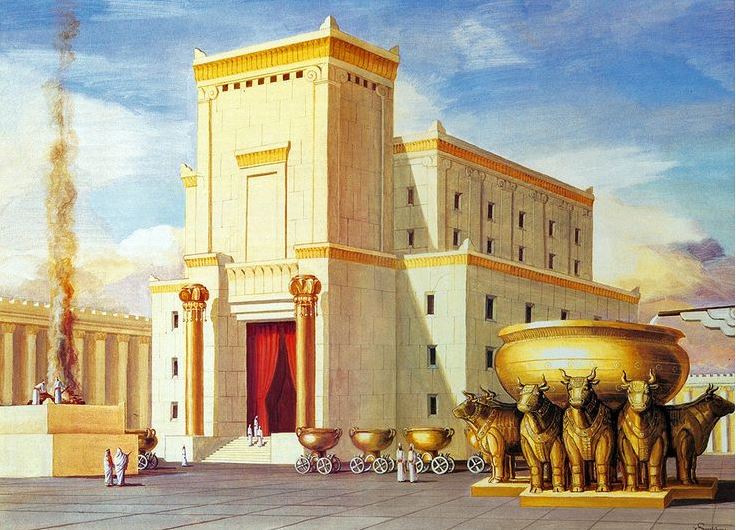
According to the Bible, Solomon’s Temple was built on Mount Moriah in Jerusalem, where an angel of God had appeared to King David (2 Chronicles 3:1).
King David gathered the materials for the temple — gold, silver, iron, copper, timber, and stone (1 Chr. 22:14); specified the plans for the temple, including the furnishings (1 Chr. 28:11–20); and commissioned skilled craftsmen (1 Chr. 22:15). But it was David’s son, Solomon, who ultimately directed the work.
Solomon sent messages to surrounding countries asking for workmen and Masons. King Hiram of the realm of Tyre (today, in the modern nation of Lebanon) sent thousands of his Masons and carpenters to Jerusalem.
The number of workers employed at the temple were approximately:
- 3,600 “Master Masons” to construct the building
- 80,000 hewers of stone in the mountains who were trained “Fellow Craftsmen”
- 100,000 laborers who were not Masons
Three Grand Masters presided over this immense team of 183,600 builders and laborers.
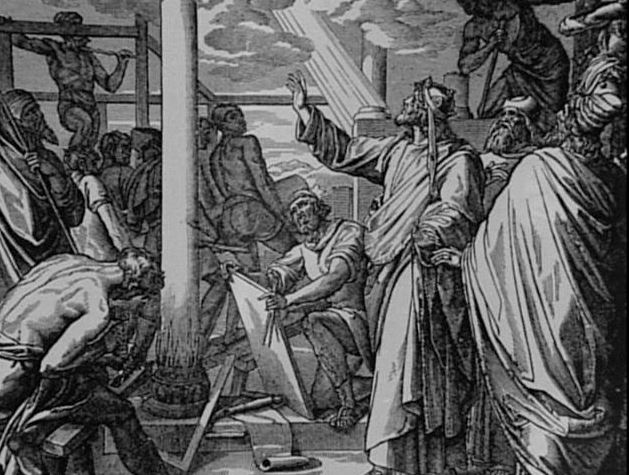
King Solomon presided as the “Grand Master” at Jerusalem. King Hiram presided in the same capacity at Tyre. Hiram Abiff was appointed the “Chief Architect” and “Master of Works” at the temple site. These three were the only ones who knew the highest secrets of the “Master Masons.”
Refusing to Divulge Mason Secrets
As the temple was nearing completion, three “Fellowcraft Masons” from the workforce ambushed Hiram Abiff as he left the temple. They demanded to know the secret password that would allow them to gain access to the knowledge (and salary!) of a “Master Mason”.
Hiram Abiff was challenged by each man in turn and, at each refusal to divulge the information, his assailants struck him with a mason’s tool. He was injured by the first two assailants and struck dead by the last.
The next day, after learning of the attack, King Solomon informed the workforce that the secret word for a Master Mason was being replaced with a substitute word. The burial site of Hiram Abiff was found, marked with an acacia branch, and his remains were moved to a more honorable location.
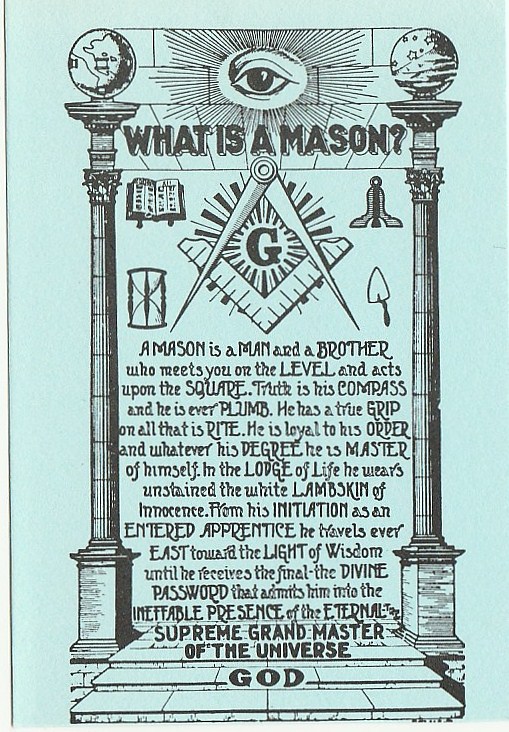
Many of the symbols that the Freemasons used then, and still in use today, originated with the events that surrounded the building of Solomon’s temple such as this story of Hiram Abiff’s example of loyalty.
Historical Background of the Freemasons
During the Dark Ages, masons usually worked for the royalty, clergy, or nobility constructing castles, cathedrals, mansions, walls, and the like out of bricks and rocks.
Farmers and other laborers were often serfs to a king and their freedom to travel outside of their kingdom was very limited. However, workers who were masons were free to travel so that they could work on construction projects in various locations. Thus they came to be known as “free masons“.
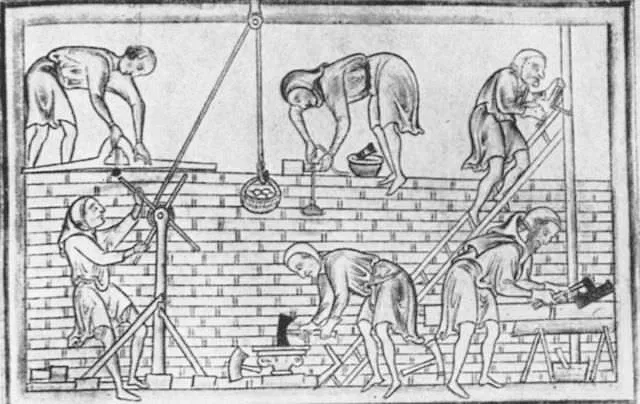
These “free masons” were accomplished tradesmen. It could take them up to 10 years to fulfill a mason apprenticeship and receive a masonic degree. They studied mathematics and geometry so that the structures they built would be structurally sound and aesthetic.
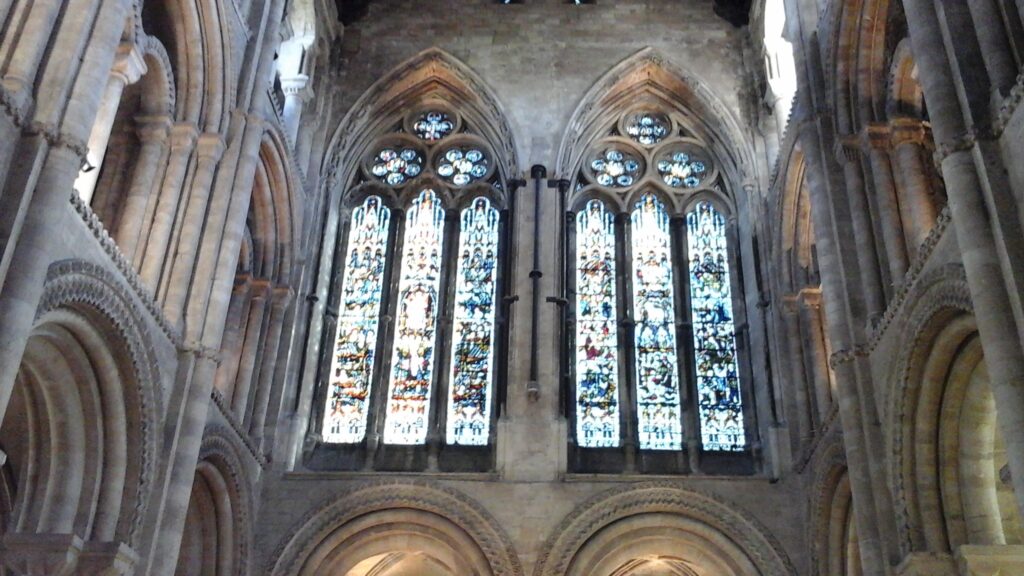
After all this training, the masons didn’t want someone with less experience to undercut their work by just slapping some bricks together with mortar.
So, like the masons who worked on Solomon’s temple, they carefully guarded the secrets of mathematics and geometry that they had learned as a part of their trade. They even identified one another by using secret words and handshakes to be sure their coworkers were qualified.
Medieval Masons
It took skill and ingenuity to produce beautiful cathedrals, churches, and castles in the Middle Ages. Different classes of masons were employed to do the work. There were rough masons and freemasons.
Rough Masons
The rough masons were not as skilled as the freemasons.
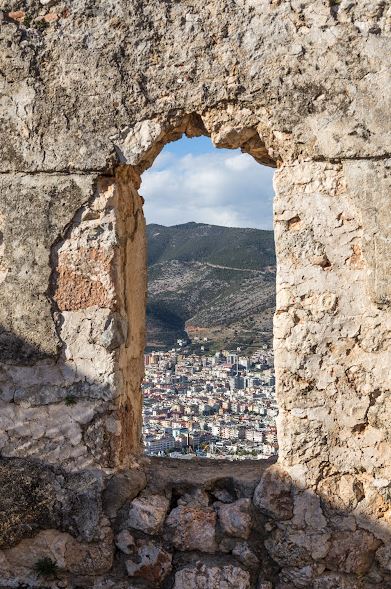
Rough masons made the rubble walls, which were often used where neither strength nor appearance was considered important. Rubble was a low grade of stone, which could not be shaped or cut.
Freemasons
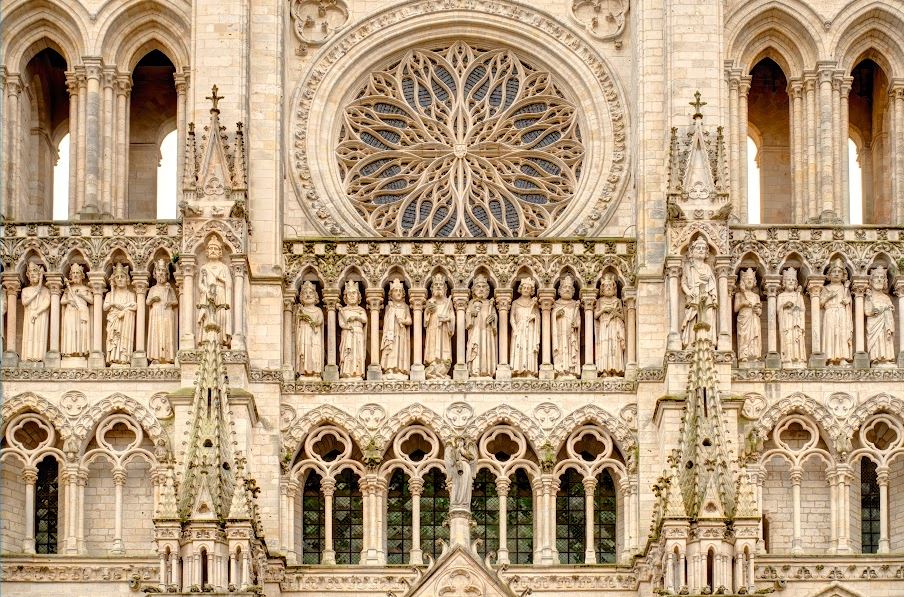
Freemasons cut stone to make squared blocks and complex shapes. They put the stones in place and made the decorative carvings. Freemasons earned more than rough masons.
Master Masons
The Master Mason was hired by a patron to be the designer, engineer, and general contractor. There was a contract between the patron and the Master Mason that defined what the Master Mason was to build and how much he would be paid.
The Master Mason then designed the building and hired the men that he needed to get the job done.
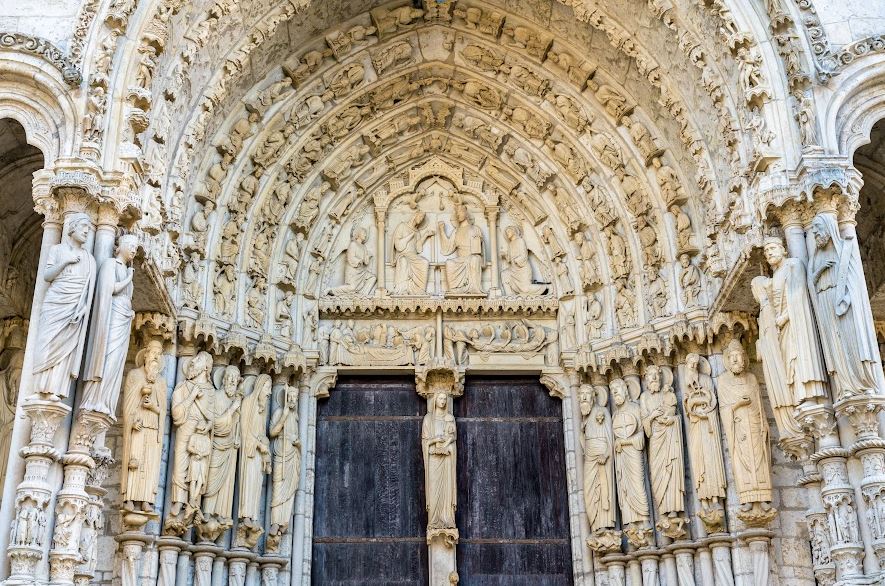
Most buildings were designed using squares and circles. The Master Mason used geometry to work out the proportions with a compass and a square.
The Masons worked in a lodge, which was a wooden structure, on the building site where they could rest and eat. It also provided shelter while they worked on the stone.
Many of the terms used by modern Masonic fraternities were derived from the Medieval Masons and Solomon’s temple, such as “Master Mason” and “Lodge”.
Freemasons Who were Not Stonemasons
About 1600, the stonemason guilds or “lodges” in England and Scotland began to admit members who did not actually work as stonemasons for their livelihood.
They were called “speculative” Masons since they joined to “speculate on” or study the symbolism and philosophy of Freemasonry, as opposed to studying the use of the tools and techniques the stonemasons used in their profession.
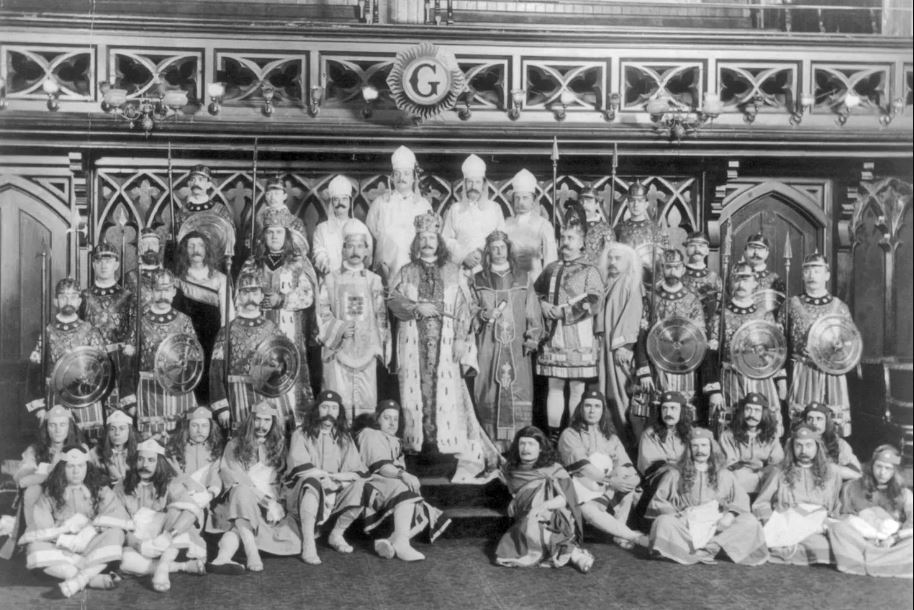
In the 1630s, the speculative Masons used the stonemasons’ simple tools – the square and compass, trowel and plumb, among others – to teach moral and ethical values.
Famous Freemasons
Fraternal Societies grew very rapidly in the late 1800s into the first part of the 1900s. In the United States, up to 40% of the adult male population held membership in at least one fraternal order. The Freemasons were especially influential and had many prestigious members.

Some famous early Freemasons included:
- George Washington, military general, and first US president (click HERE to see his grave)
- Benjamin Franklin, scientist, inventor, and US founding father (click HERE to see his grave)
- Winston Churchill, British Prime Minister (click HERE to see his grave)
- Franklin D. Roosevelt, 32nd President of the United States (click HERE to see his grave)
- Wolfgang Amadeus Mozart, Austrian composer and musician (click HERE to see his grave)
- Mark Twain, author (click HERE to see his grave)
Freemasons Gravestone Symbols
Freemason symbols appear in many places, from lapel pins to architecture and from rings to gravestones.
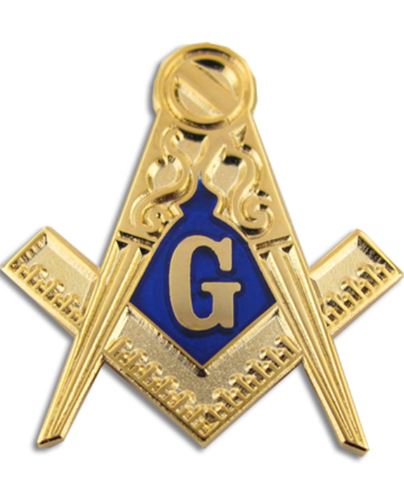
Why? There are several reasons.
First, the symbols help the Freemasons to remember the commitments they have made.
Second, the symbols allow Freemasons to communicate with one another quickly, even transcending language barriers.
Lastly, the symbols let others know of their dedication, integrity, knowledge, faith, and leadership skills.
Below are some of the more common Freemason symbols that appear on gravestones.
The Square and the Compass
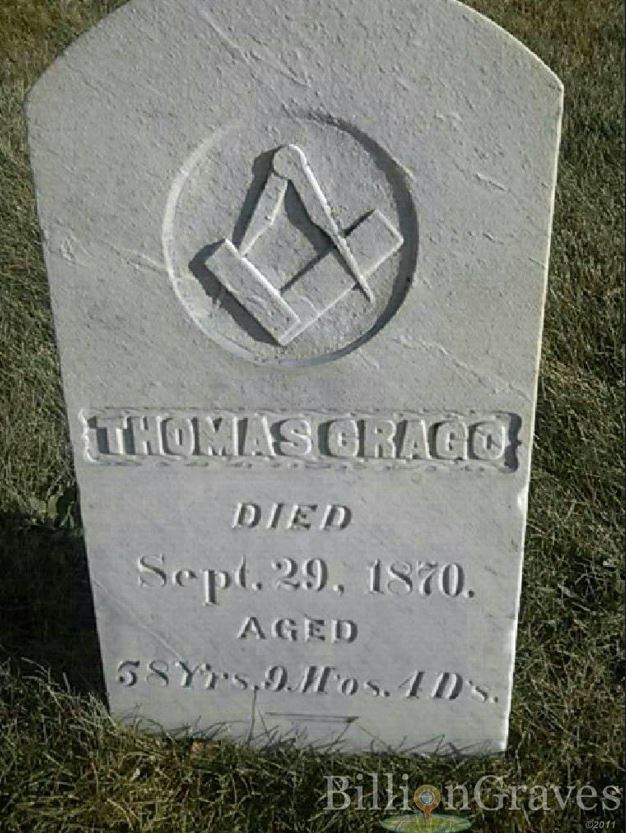
The most widely recognized symbol of Freemasonry is the square and compass. The square deals more with the earthly realm and the compass deals more with the spiritual realm. Together, they represent both earthly and spiritual responsibilities.
The square is a reminder to keep actions square and true with God and all mankind. It represents honesty, stability, balance, and having a solid foundation.
Since a compass is used to draw circles, it is a symbol of unending boundaries and spiritual eternity.
The Letter ‘G’
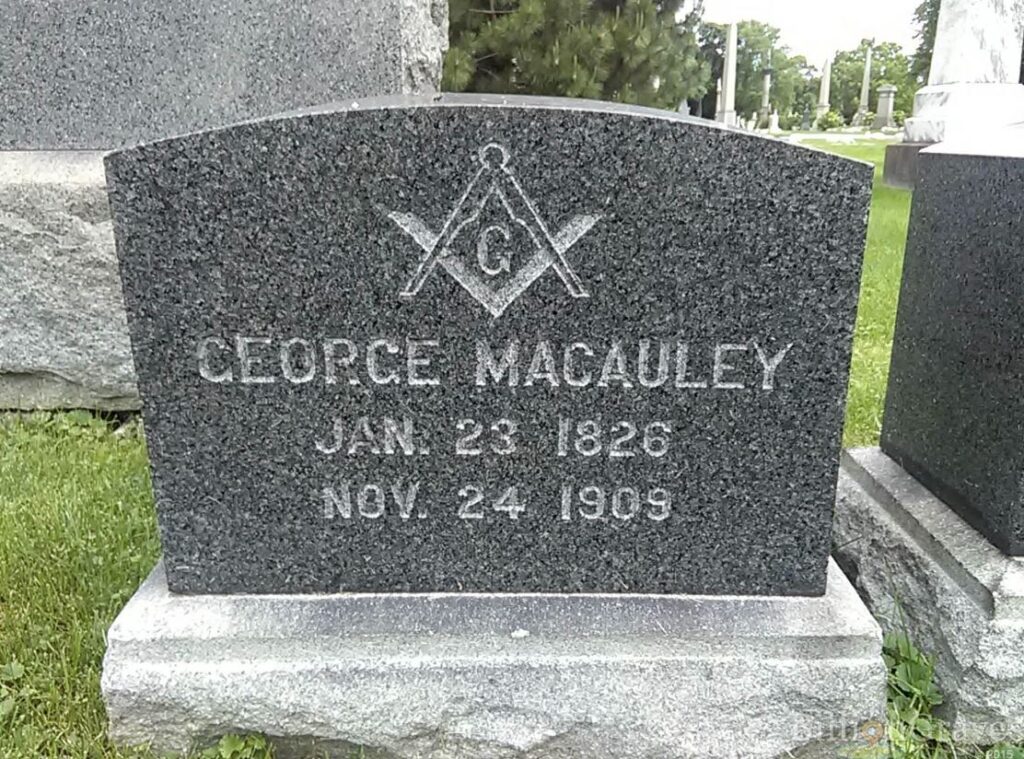
The letter G stands for both God and geometry. A belief in God is the main requirement for Freemasonry membership. Geometry is said to help unravel the wonders and mysteries of nature and the universe.
All-Seeing Eye

The “All-Seeing Eye” is a symbol used by the Freemasons that represents the idea that all deeds on earth are seen by the God of heaven.
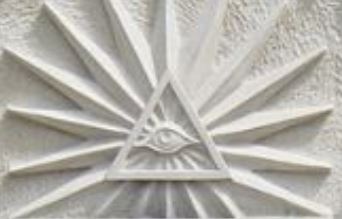
The All-Seeing Eye is sometimes called “The Eye of Providence”. It is often enclosed in a triangle and surrounded by rays of light, representing God or Providence, as His eye watches over mankind.
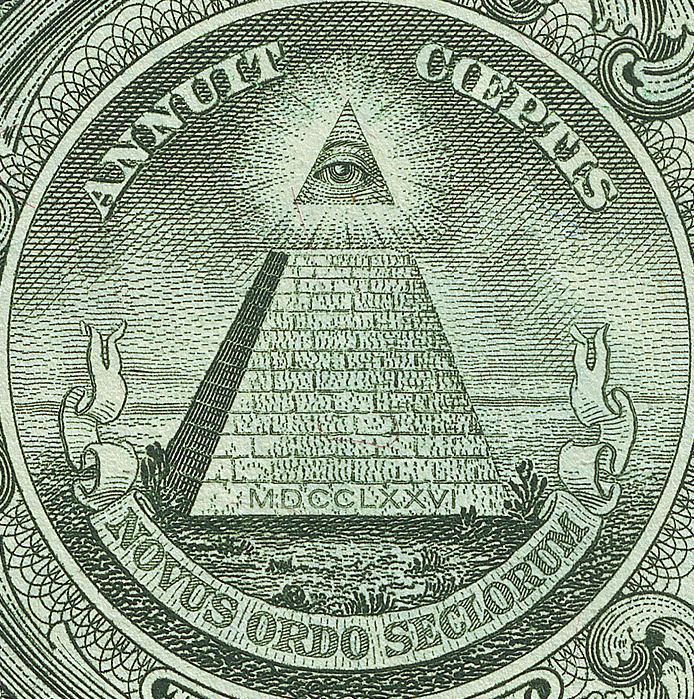
A famous example of the Eye of Providence appears on the backside of the United States one-dollar bill.
Freemasons Handshake

Handshakes are among the symbolic gestures used in Freemasonry that are said to have been used anciently in Solomon’s temple. They are used as a means of recognition among fellow-Masons, as well as reminders of virtues to be practiced.
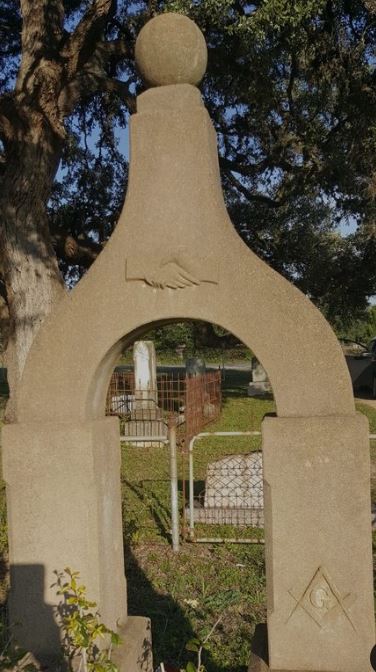
This gravestone arch above has both a handshake and the compass and square symbols on it.
Freemasons Tools
Freemasons consider God to be the architect of the universe. The Freemasons strive to become “architects” as well, by conscientiously using the “tools” God has given them to create the best foundation for a good life for themselves and others.
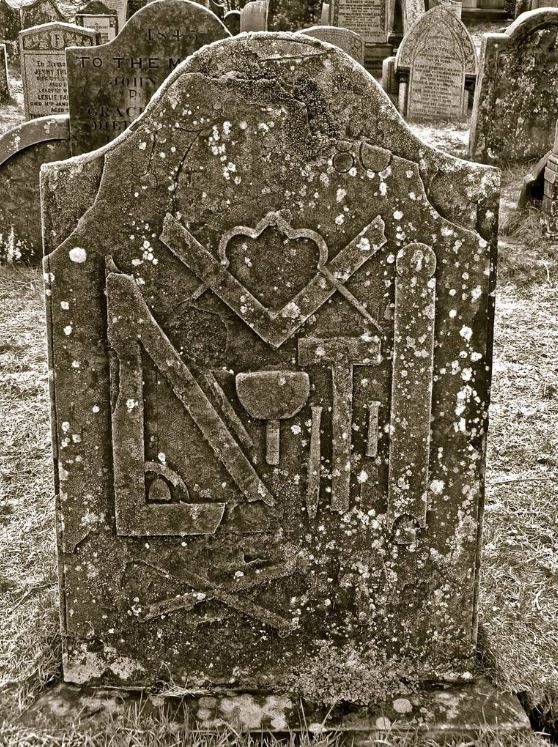
Plumb bobs
In stonemasonry, the plumb ensures walls are vertically straight. Plumb bobs have a weighted object at the end of a string or line that hangs down from a fixed point when suspended in midair. The weighted object will swing back and forth until it comes to rest in a perfectly vertical position. To Freemasons, the plumb is a symbol of justice and living in an upright manner.
Level
The level is a tool used by stonemasons to ensure surfaces are horizontally straight. They measure the degree of flatness of any surface from side-to-side and front-to-back. Freemasons, use the level as a symbolic reminder that all men are equal.
Trowel
One of a stonemason’s most important tools is a trowel which is used to spread the mortar that binds stones together. Symbolically, in Freemasonry, the trowel is used to spread the “cement” of brotherly love and to unite a society of friends.
Freemasons Acacia Branch
The gravestone below includes the Freemasons’ symbols of the compass and square, the light of the sun and a star, the letter ‘G’ on a plumb bob, and a level.
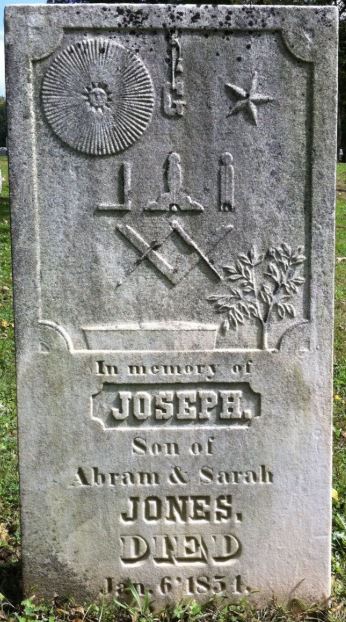
It also has an acacia branch on it. Known in Hebrew as “shittim,” God commanded Moses to use the acacia tree to build the Ark of the Covenant, into which he placed the stone tablets with the Ten Commandments written on them.
Like the ancient Egyptians and Israelites, the Freemasons consider the sprig of acacia a symbol of the immortal soul. Acacia is an evergreen tree, remaining green all year around, which represents the belief that the human spirit never dies.
Freemasons and the Order of the Eastern Star
The Order of the Eastern Star is an appendage organization to the Freemasons. It was founded in 1850, but not approved by the Masons until 1873. The order is based on Biblical teachings and is open to people of all beliefs.
The Order of the Eastern Star has about 500,000 members in 10,000 chapters in twenty countries. Originally open only to women, the organization now allows men who are Master Masons to join as well.
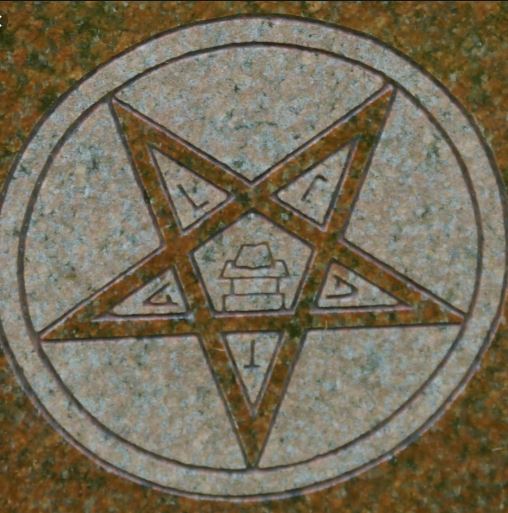
The symbol for the Eastern Star is a five-pointed star. The bottom ray of the star points downward, symbolic of the star that shone over the manger of baby Jesus.
The letters “FATAL” on the rays of the star stand for “Fairest Among Thousands, Altogether Lovely,” a biblical quote from the Song of Solomon.
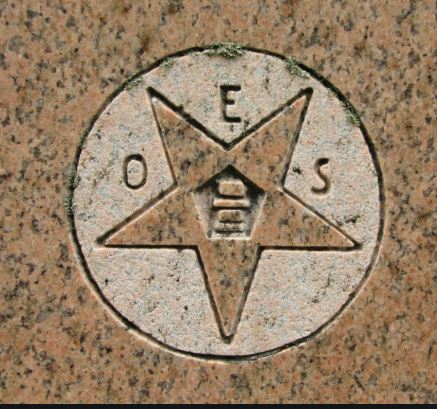
At the center of the symbol, there is an altar in the middle of a pentagon. Resting on the altar is the Book of Law, which may vary depending on the dominant religion and beliefs of the members of the lodge. The most commonly used book is the King James version of the Bible.
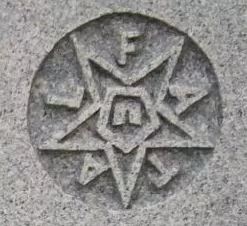
The five points of the star also represent these five Biblical women and their exemplary virtues.
- Adah – obedience to duty
- Ruth – adherence to religious principles
- Esther – loyalty
- Martha – endurance in trial
- Electa – endurance of persecution
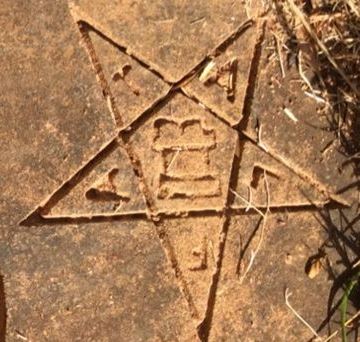
Many older gravestones have hand-carved Freemason and Eastern Star symbols like this one.
Columns
The gravestone below has many fraternity symbols of the Freemasons. There are two all-seeing eyes, rays of light, and the square and compass.
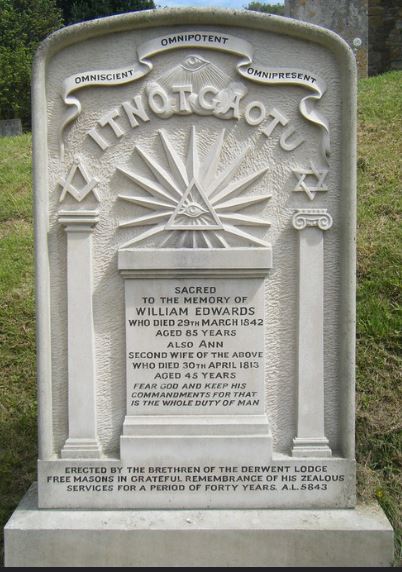
The letters “ITNOTGAOTU” stand for In The Name Of The Great Architect Of The Universe. The banner at the top says, “omniscient, omnipotent, and omnipresent”, meaning that God is “all-knowing, all-powerful, and present-everywhere at the same time”.
At the bottom there is an altar and on either side of the altar are two columns.

These columns represent divine protection. They symbolize the pillar of cloud and pillar of fire that God sent to guide his followers by day and by night, as recorded in several instances in the Torah and the Old Testament.
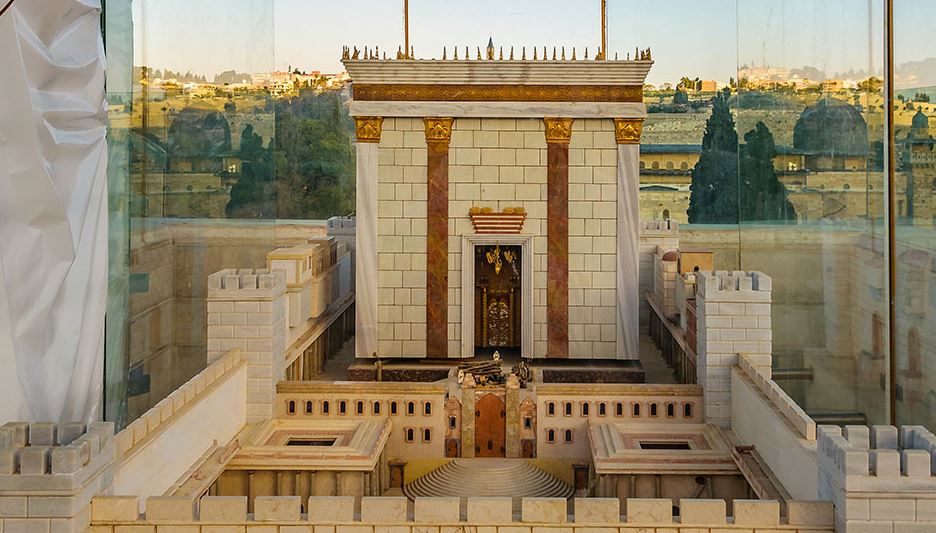
To the Freemasons, the columns also represent good and evil, a reminder that no matter how difficult a situation may be, one should always strive for righteousness.
Your Cemetery Visits
Now that you know the meanings of some of the symbols used by the Freemasons, they will “speak to you” as you walk through the cemetery, letting you know more about your ancestors and the other people buried there.
The next time you are at a cemetery, keep an eye out for Masonic symbols. You are very likely to see some!
Learn More
To learn about other cemetery symbols go to:
- Understanding Cemetery Symbols Part I
- Understanding Cemetery Symbols Part II
- Understanding Cemetery Crosses
- Winged Skull Gravestone Symbols
- Irish Gravestone Symbols
Volunteer to Take Gravestone Photos
We need your help to take photos of gravestones! It is easy and is done completely with your smartphone! Click HERE to get started.
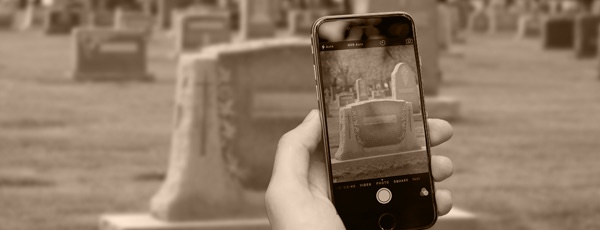
Taking photos of gravestones with the BillionGraves app helps to preserve history!
You are welcome to do this at your own convenience, no permission from us is needed. If you still have questions after you have clicked on the link to get started, you can email us at Volunteer@BillionGraves.com. We’ll be happy to help you!
Are you planning a group service project? Email us at Volunteer@BillionGraves.com for more resources. We will help you find a cemetery that still needs to have photos taken.
Happy Cemetery Hopping!
Cathy Wallace

